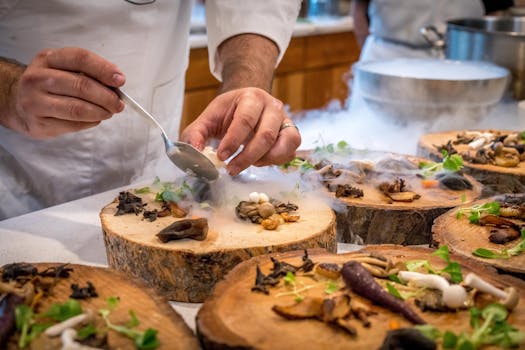Molecular Cuisine at Home: Simple Techniques to Create Delicious Foams and Spheres
Molecular cuisine, often seen in high-end restaurants, is a culinary trend that combines science and art to create innovative dishes. This style of cooking utilizes techniques that transform the textures and flavors of food, making it an exciting experience for the palate. While it may seem daunting, many molecular gastronomy techniques can be easily replicated at home. This article will explore simple methods to create foams and spheres, allowing home cooks to elevate their culinary creations.
Understanding Molecular Gastronomy
Molecular gastronomy is a sub-discipline of food science that focuses on the physical and chemical transformations of ingredients during cooking. It involves the use of modernist techniques and tools to manipulate food at a molecular level. The result is a unique dining experience that often surprises and delights guests.
Key components of molecular gastronomy include:
- Foams: Light and airy textures created by incorporating air into liquids.
- Spheres: Small, gel-like balls that burst with flavor when bitten into.
- Gels: Thickened liquids that can be molded into various shapes.
Creating Delicious Foams at Home
Foams are a staple in molecular cuisine, adding a light and airy element to dishes. They can be made from a variety of liquids, including fruit juices, broths, and creams. Here’s how to create foams at home using simple techniques:
Ingredients and Tools
To make foams, you will need:
- A liquid base (e.g., fruit juice, stock, or flavored cream)
- A stabilizer (e.g., soy lecithin or gelatin)
- A hand blender or an immersion blender
- A siphon (optional, for more advanced foams)
Basic Foam Technique
Follow these steps to create a basic foam:
- Choose your liquid base and pour it into a bowl.
- Add the stabilizer according to the recommended ratio (usually around 1% of the liquid weight).
- Using a hand blender, blend the mixture until it becomes frothy and airy.
- For a more stable foam, transfer the mixture to a siphon and charge it with a gas cartridge.
Experiment with different flavors and bases to create unique foams that complement your dishes. For example, a citrus foam can enhance seafood, while a savory herb foam can elevate meats.
Exploring Spheres: The Art of Spherification
Spherification is another exciting technique in molecular gastronomy that allows you to create small, caviar-like spheres filled with liquid. This technique can be used to encapsulate juices, sauces, or even cocktails. Here’s how to get started:
Ingredients and Tools
To create spheres, you will need:
- A liquid to encapsulate (e.g., fruit juice, flavored broth)
- Sodium alginate (a natural thickening agent)
- Calcium chloride or calcium lactate (for the setting bath)
- A syringe or dropper
- A bowl for the setting bath
Spherification Technique
Follow these steps to create spheres:
- Mix your chosen liquid with sodium alginate (typically 1% of the liquid weight) until fully dissolved.
- Prepare a setting bath by dissolving calcium chloride in water (about 1-2% concentration).
- Using a syringe or dropper, carefully drop the alginate mixture into the calcium bath.
- Let the spheres sit for about 1-2 minutes, then remove them and rinse in clean water.
These spheres can be used to add bursts of flavor to salads, desserts, or cocktails, creating a surprising and delightful experience for your guests.
Conclusion: Elevate Your Culinary Skills
Molecular cuisine may seem complex, but with simple techniques like foams and spherification, you can bring a touch of modernist cooking into your home kitchen. By experimenting with different flavors and textures, you can create dishes that not only taste amazing but also provide a unique dining experience.
Key takeaways include:
- Molecular gastronomy combines science and art to transform food.
- Foams can be easily created using a hand blender and stabilizers.
- Spherification allows for the creation of flavorful spheres that burst in the mouth.
With these techniques in your culinary toolkit, you can impress family and friends with innovative dishes that showcase your creativity and skill. So, gather your ingredients and start experimenting with molecular cuisine at home!
